I doubt I will get this out in any parameter that could remotely be considered timely, but with the announcement of Skyrim’s 10 billionth re-release at this year’s E3, I’ve been thinking about the Elder Scrolls series a lot, and realizing how much I genuinely loved Elder Scrolls IV: Oblivion. I’d like to reminisce, briefly, about how impactful the game was for me, and then I’m going to talk about an important mechanic that Oblivion had, which deepened the game’s immersion, and which Skyrim mostly lacks.
I
Morrowind, unmodded and at the beginning, seems to require either a knowledge of how to manipulate or break the game’s systems, or an incredible patience and masochism as mudcrab after mudcrab kills you.
I am bad at both jaywalking and Dark Souls, and therefore am still staggering through the early stages of the game. Oblivion, on the other hand, is more forgiving (or dumbed-down, depending on who you ask), a fact which some hardcore fans point to as proof of the beginning of the series’ decline. That may be true – as much as love the game, it sets up many of the generic elements and shallowness that then plagues the later installment Skyrim. But the relative forgiveness of Oblivion allowed me to access not only this one game on its own, but a broader range of video games as well.
Oblivion was one of the first real, mainstream games I ever played. Before it, I’d played your typical educational games, your Mathblasters and your Cluefinders, a lot of city-builder games like Zeus, and Pharaoh and Cleopatra, or real time strategies like Age of Mythology and Lord of the Rings: Battle for Middle Earth. But never an RPG, and Elder Scrolls: Oblivion was my starting game.
Oblivion has so much value to me as a game because it was such a new experience for me in middle school. I was obsessed with the game, couldn’t believe what happened in the game. People had schedules that operated outside of whether I was interacting with them or not! A whole city got destroyed! The Mage’s Guild in Bruma gets obliterated! The Paranoia quest had multiple different outcomes depending on how far you let things go and who you talked to! They build a statue of you with the armor you were wearing when you did the big heroic thing! Incredible!!
I can not understate the impact this game had on me. It got me interested in video games as an artistic medium, and excited about fantasy again, after being burned by so many “classic” fantasy books full of heroic misogynists. But now, here was me, a lady playing a lady! Saving everyone! Oblivion opened up not only the braoder genre of fantasy, but the smaller medium of video games as well.
The game opens with such promise, spinning around the massive Imperial city, showing off the scale and scope of the main city, as well as the promise of the wide landscape and looming mountains in the distance, before zooming in on the Imperial prison and your cell. It takes you from the grandiose to the mundane – you have humble beginnings as just another prisoner, but all you have to do is escape, and then there’s this whole great wide world waiting for you.
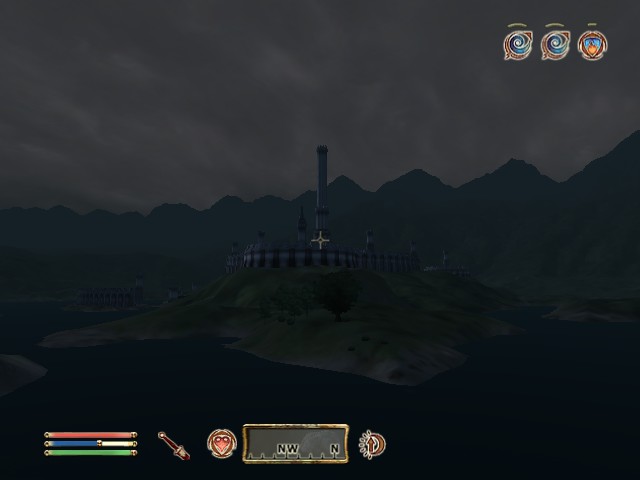
Not the image from the opening cinematic, but The Imperial City just the same.
Depending on how you did the “Paranoia” quest, Glarthir wound up killing people. You, the player could kill people. That’s illegal! Spyro the Dragon and city-building sims didn’t let you do illegal things!
I was so proud of myself for figuring out that zombies didn’t populate dungeons in the cold north of the map. They scared me so badly at the time, the sound mixing on their moose-screams was so good. They’re very goofy now.
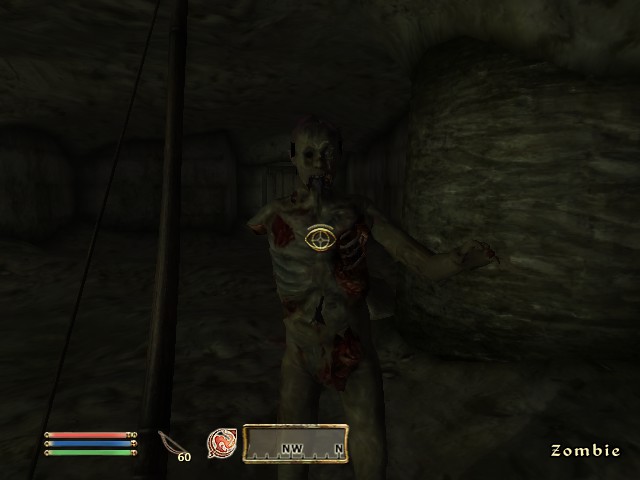
This zombie in the starting area used to scare me witless.
I got really into plants for a while from all the harvesting you do in Oblivion. I was even prouder of myself for being able to identify a Morning Glory in the real world than I was for figuring out the zombie trick.
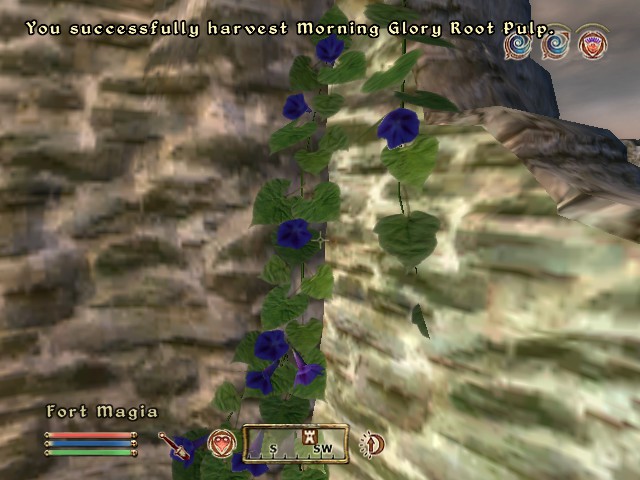
I still replay the game fairly frequently. My current character Thracybulis is a Nord woman who used to be a gladiator and has now retired to a life of diving for clams and pearls to sell. She lives in the shack outside the Imperial city, and occasionally goes through caves and old ruins when she’s short on cash. She hits things with her fists. She’s grizzled and has upper-lip hair. I love her.
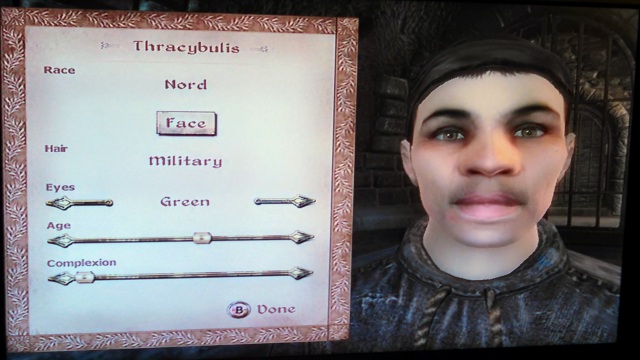
I’d forgotten just how round and ballonish all the heads in this game are. All part of the charm.
II
Oblivion felt like a real world, where people went about their lives with or without me, the player character. It felt like the attacks on the Mages Guild would continue without my intervention, that The Sirens would continue robbing men in Anvil, unless I infiltrated them (the game should have given the player the option to join tbh), that the Gray Prince would hire another adventure to discover his heritage for him if I didn’t show up.
Skyrim doesn’t feel this way to me. It feels like everyone, even the villains of the game, are waiting around for you to stumble onto he scene before they start doing anything. Obviously, both games are scripted entirely around you, the player. The NPCs do their little schedules of sleeping and tending stores, but the story doesn’t start, and will not start, until you load up the game and trigger some scripting for a dragon to appear, or an Oblivion Gate to open. But Oblivion felt different. A large component of this was the way time advanced in Oblivion, and the way this advancement was built into quests and story lines.
Many quests in Oblivion require you to use the “Wait” mechanic, opening up a sub-screen to root your character in one spot and peed up in-game time.
For instance, there was Glarthir’s “Paranoia” quest, which I keep mentioning because it’s emblematic of the best Oblivion achieved, with multiple branching options and endings possible, a memorable NPC, and a specific schedule that the player has to follow to advance the quest.
- meet Glarthir behind the Church at midnight
- wait for Bernadette Peneles to leave her house at 6:00 am and follow her like Glarthir asks
- wait for Toutious Sextius and follow him
- wait for Davide Surilie to leave his house at 8:00 am
- from there, either kill the three like Glarthir asks, go to the guards, warn the men who then kill Glarthir, let Glarthir kill the people himself, or you the player attack Glarthir
This all requires the player follow the schedule of NPC’s, rather than their own. The game has it’s own internal clock, and in this instance, the player has to bow to it to complete the quest. This bestows an incredible sense of immersion to the game, with the world and its inhabitants gaining another level of of feeling lived in, all from scheduling.
Outside of the the “Paranoia” quest line, there are still others that require a specific time to advance or initiate the quest. The Deadric Prince Mephala’s quest can only be initiated between midnight and dawn. Similarly, Azura can only be spoken to between dusk and dawn. To advance in the Thieves Guild, you have to meet your contact, Armand Christophe in a garden around midnight. In the “Unfriendly Competition” quest, the player has to wait until around 8:00 pm to start following Thoronir, and then wait some more until he meets up with Agarmir and they reveal their shady trade deals.
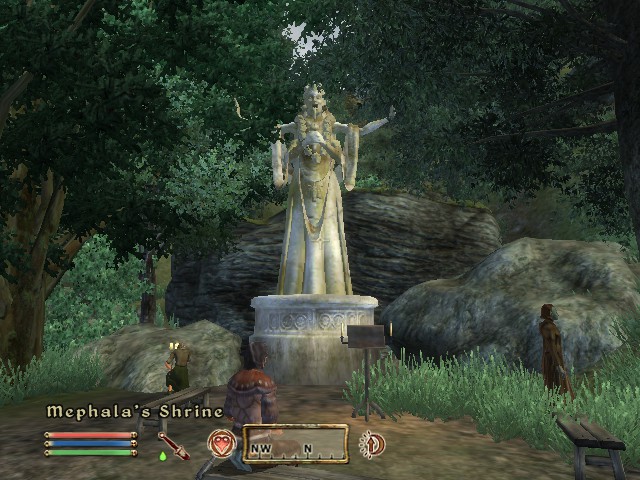
The wait mechanic isn’t necessary to complete these quests – you can sleep until the correct time, or run around doing other things as long as you keep an eye on the in-game clock, and can time your return to the quest giver or objective correctly. Still, however you chose to go about it, the passage of time has to occur. It isn’t enough that you’re the hero, you still have to wait for other people and entities’ schedules. I can’t remember an instance of this in Skyrim, which doesn’t necessarily mean it didn’t happen (Azura might have had one again), just that if it did it was executed in a way that didn’t leave an impression on me.
Along with the wait mechanic, another important way Oblivion fleshed out its world with time is the way the landscape can change as the game advances. The events that I mentioned early on that left such a huge impression on me, such as the destruction of Bruma’s Mage’s Guild leave a physical difference on the games landscape. Skyrim did this early on, with the destruction of the starting town Helgen.The player can later return to the burned-out remains of the town, after escaping the dragon that destroys it in the first place. But this is one town, and its unavoidable. It’s similar to Kvatch, in that way, which is unavoidably destroyed if you’re doing the main quest. Helgen you literally can’t avoid, as it’s the prologue and charter creation of the game, while you can technically never visit Kvatch if you avoid the main quest in Oblivion, leaving Kvatch in a sort of limbo. It’s always being destroyed, you just aren’t there to witness it.
Oblivion has more than just the prerequisite singular main quest destruction however. The chapel at Weynon Priory also comes under attack within the main quest line, and many of the monks who inhabit it are killed. Similarly, but outside the main narrative quest of the game, the Mages Guild in Bruma can be destroyed, its inhabitants killed and the building set on fire if the payer goes far enough along the Mages Guild quest line. The game world doesn’t feel static, because of these changes, however minute. Buildings are destroyed and people killed, the physical landscape of the game changing over time.
I know tons of criticism has been made of Skyrim already, and that it’s a little hypocritical of me to defend my bad Elder Scrolls game that I like, but then to turn around and tear down that other bad Elder Scrolls game that I’m not as fond of. Skyrim is undoubtedly the same gateway game for young kids that Oblivion was for me. Some people probably played the game for the first time and had such a sense of wonder and adventure, and can name favorite quests and characters and location, the same way I can for Oblivion. I don’t want to diminish that. I’m not necessarily trying to tear one game down while propping up the other, just point out a mechanic that was lost between the two games.
Because of the use of time and waiting, Oblivion felt like a living environment that changed and evolved, not a blank, static canvas that you just kind of move through, like a roller coaster that you’re locked into at an amusement park, which is how Skyrim felt to me. A theme park ride versus a real world.
Some of this reading can be chalked up to my nostalgia for the game, the fresh eyes I brought to it that first play-through. Everything was new and amazing,a dn i’ms till holding on to that. Alternatively, maybe there was some slightly better writing. Maybe a mix of both.
If it is merely nostalgia, and the fact that RPGS were a new genre to me when I first started playing Oblivion, that means that thankfully, people who made their first forays into gaming with Skyrim still got that awe-inspiring experience I did with Oblivion.


Ah, now I remember you always talking about this game! The wait mechanic sounds really interesting, probably because I’ve never really played a game that used one.